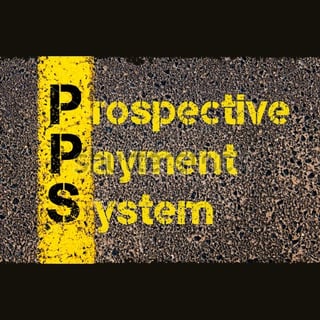
The Centers for Medicare and Medicaid Service (CMS) released the CY2018 Medicare Home Health payment rule this week. The home health Market Basket Index inflation update for 2018 is preset at 1% along with the suspension of the annual Productivity Adjustment. While the proposal does not reference the 2% sequestration, it is definitely expected that such will continue in 2018.
The proposed rule may be found here.
The 1% update is offset with the third year of a 0.97% case mix creep adjustment, leaving a net of 0.03%. This is the first rate increase since 2013 as the four-year rate rebasing concludes in 2017. CMS estimates that Medicare spending on home health services in 2018 will be $80 million less than would occur without the adjustments, due to some modifications in the current case mix weights.
The proposed base episode rate for 2018 is set out at $3,038.43. In contrast, the 2017 base rate is $2,989.97. CMS proposes to recalibrate the case mix weights again in 2018, leading to a budget neutrality adjustment of 1.0159. The base rates do not show a 0.03% change because of the case mix weight recalibrations that alter the second part of the payment rate calculation. As such, an apples to apples comparison between 2017 and 2018 is not easily done. CMS estimates that the net result of all of its rate proposals is a $80 million reduction in Medicare payments to home health agencies in 2018.
The rate change also affects LUPA payment rates. Those rates will rise 1% as the case mix creep adjustment does not affect those per visit reimbursements. Non-routine medical supply rates are also adjusted by 1%. The NRS conversion factor changes from $52.50 in 2017 to $53.03 in 2018.
No further case mix creep adjustment is proposed beyond the 2016-2018 reduction of 0.97%. The proposed rule does indicate that CMS believes that there has been an increase in the average case mix weight unrelated to changes in patients’ conditions, but that no added adjustment will be imposed in 2018. That finding does indicate that further adjustments can be expected starting in 2019.
With respect to outlier payments, CMS proposes to keep the same 80% loss ratio that has been in use since the beginning of HHPPS and maintain the Fixed Dollar Loss Ratio at 0.55. This would have the effect of reducing the number of episodes that qualify for outlier payment. CMS indicates that such a change is needed to keep outlier spending within the 2.5% spending limit.
The 3% Rural Add-On is not included in the 2018 rate proposal as it expires at the end on 2017. Legislation is currently pending to extend the add-on for five years. Congress is expected to take up that legislation in the Fall.
The proposal continues the 2% rate reduction for HHAs that fail to comply with the quality data submission requirements that involve OASIS and HH-CAHPS.
CMS offers an analysis on the impact of rate rebasing. Overall, that analysis conveys that the rate cuts have not been deep enough to bring reimbursement in line with costs of care. MedPAC shares that view and has recommended another round of rebasing. To support that contention, CMS explains that since rebasing began in 2014 that the average number of visits per episode is down (lowering the per episode cost). On the other side of the equation is that the number of HHAs is down slightly since and the number of users is also slightly down, which CMS explains is due to the reduction in hospital and SNF discharges.
VALUE BASED PURCHASING
The Home Health Value Based Purchasing (HHVBP) program gets some updates in the measures applied.
The HHVBP is estimated to save Medicare $378 million in reduced spending for inpatient hospitalization and SNF stays by 2022.
While CMS is moving forward with a proposed VBP pilot, an effort to legislate VBP in all of post-acute care is going on as well. At this point, available information indicates that the two governmental forces are not moving in tandem. That will make for a very interesting health policy dynamic to see what model prevails ultimately. Nevertheless, the signals are very clear that VBP is a contender for serious payment reform in Medicare.
SUMMARY
Overall, the rule is a combination of expected rate proposals, a recalibration of some case mix weights, and a tweaking of the Value Based Purchasing pilot program.
